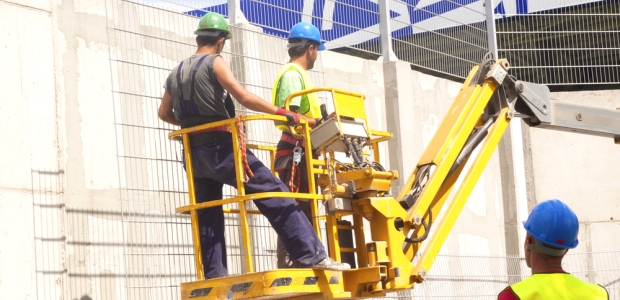
NIOSH 30-Year Study Finds 'Some Progress' in Hearing Loss Cases
The construction industry had the highest incidence rate during most of the time periods examined in the study.
NIOSH researchers have published a study examining 30 years of hearing loss trends experienced by workers who are exposed to noise while on the job across various industries. The study, published in the American Journal of Industrial Medicine, found that the overall prevalence of hearing loss for workers in all industries remained consistent at 20 percent over the entire 30-year period. According to NIOSH, the incidence and risk of incident hearing loss decreased over time, indicating some progress in occupational hearing loss prevention efforts during the period.
Additional efforts to protect workers' hearing are needed in the mining, construction, health care, and social assistance sectors, NIOSH reported, adding that about 22 million U.S. workers are exposed to hazardous noise at work. This study is the first to look at 30 years of hearing loss trends by industry sector.
"Looking at hearing loss trends across all industries over a long period of time can provide a better understanding of what still needs to be done for the protection of workers. Noise control in the workplace is directly linked to the prevention of hearing loss among workers in all industries and can positively impact workers on the job and at home," NIOSH Director Dr. John Howard said.
The researchers examined audiograms for almost 2 million noise-exposed workers from 1981-2010. The construction industry had the highest incidence of hearing loss during most time periods. On a more positive note, the risks of incident hearing loss were significantly lower during 2006-2010 for every industry sector except mining, health care, and social assistance. "Other factors may have contributed to the improvement in incidence and risk, including the overall reduction in smoking, which is a risk factor for hearing loss, and better treatment of middle ear disorders," the agency noted.
Mining has a higher percentage of noise-exposed workers than any other U.S. industry, NIOSH noted, while construction has less stringent hearing conservation requirements than most industries, "and the mobile, seasonal nature of construction work and large proportion of independent contractors contribute to the difficulty in implementing hearing conservation practices. While only 4% of workers are exposed to hazardous noise in the Healthcare and Social Assistance sector, 74% of these workers have reported not wearing their hearing protection. Efforts to reduce both the burden and risk of hearing loss are still needed. There is no industry where workers can be considered 'safe' from hearing loss," according to the agency.
The study, "Trends in Worker Hearing Loss by Industry Sector, 1981–2010," can be found here.